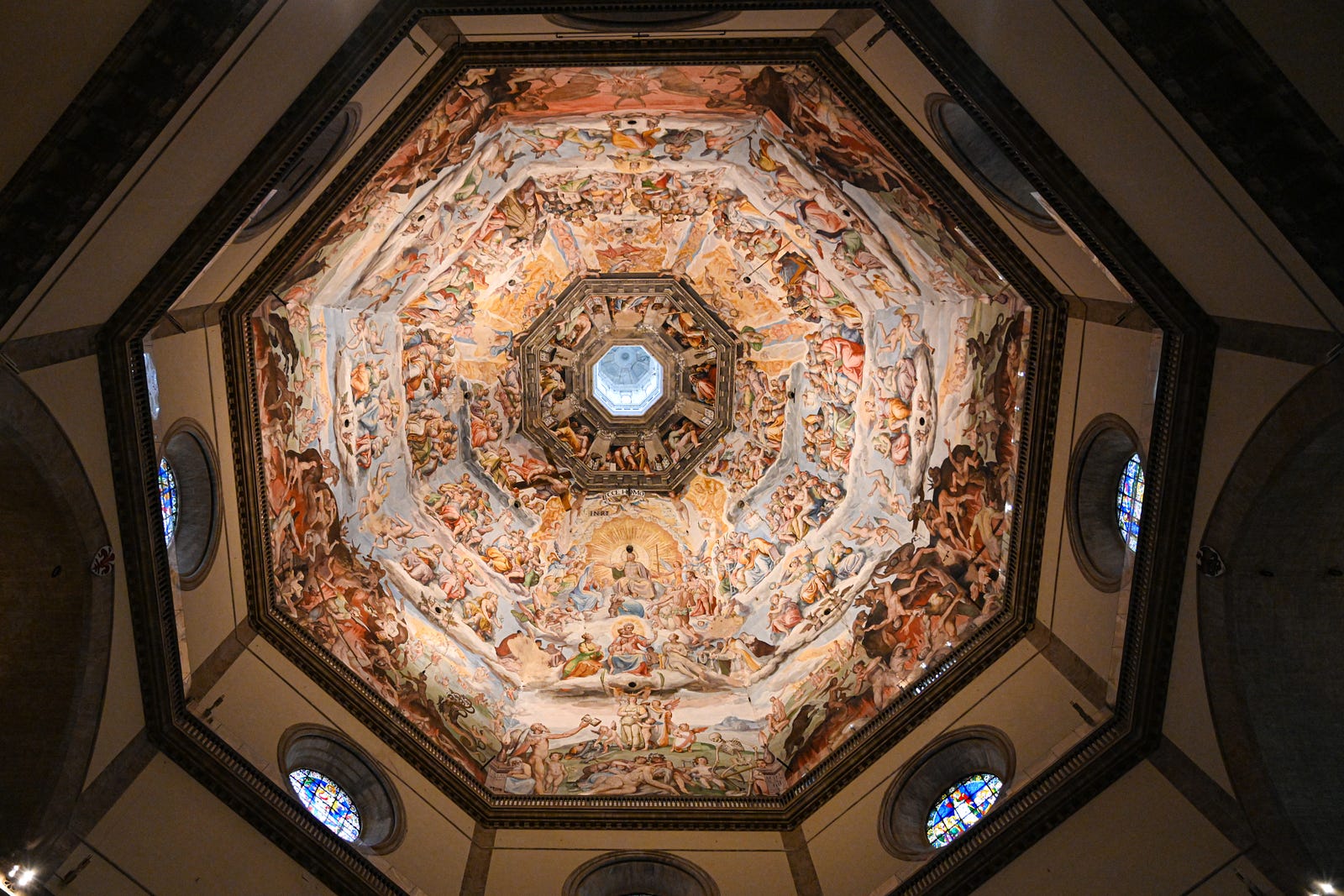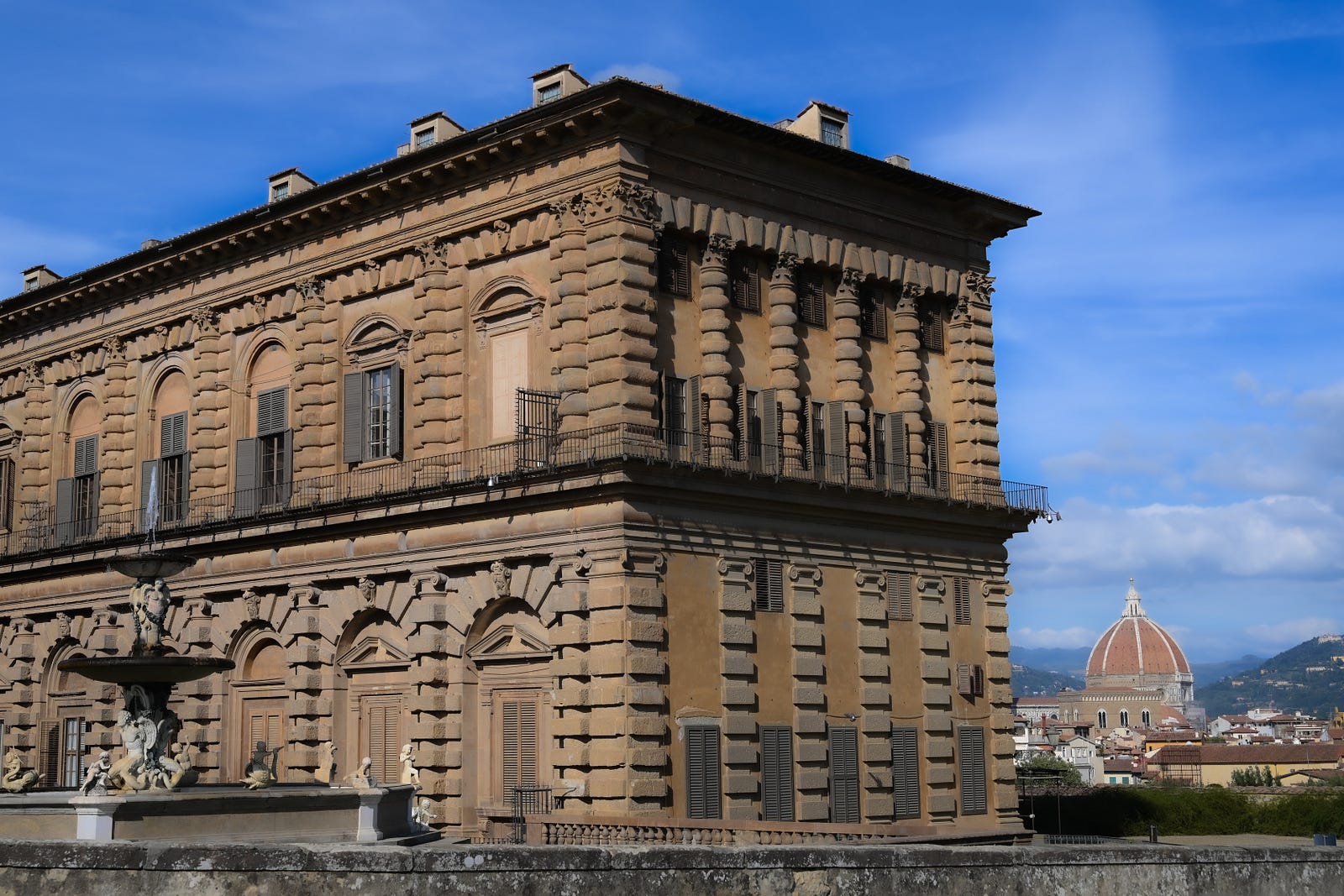by Janelle Schroy
The antique carousel slowed to a gentle stop. All the children tumbled off, eyes smiling and cheeks flushed from cold and excitement.
The early 20th century wooden carousel of the Picci family was a wonder to behold. The king’s carriages were gilded and shining, and the carousel seemed draped in joy by the light of the setting sun.

The carousel assumed a place of importance just to the left of a grand archway in the busy Piazza della Repubblica.
We were in the historical center of Firenze, the Italian name for Florence. The piazza was once the site of the Roman forum, a place of trade, learning, faith and cultural life.
The Jewish Ghetto had also once had a home there, where the Jews had been forced to live out their days under Cosimo I de’ Medici in the 1500s. He’d been the Duke of Florence as well as the Grand Duke of Tuscany, and he and the Medici family ruled the city for nearly 300 years, becoming great patrons of the arts.

We gathered our girls and resumed our evening stroll. The city was alive with activity. Vendors called out for us to come and see their wares, and ristorante workers began lighting candles to lure would-be customers toward a cosy table where they could settle for a decadent Italian meal. We reveled in the delicious scents wafting out from each doorway, spoiled for choice about where to dine.
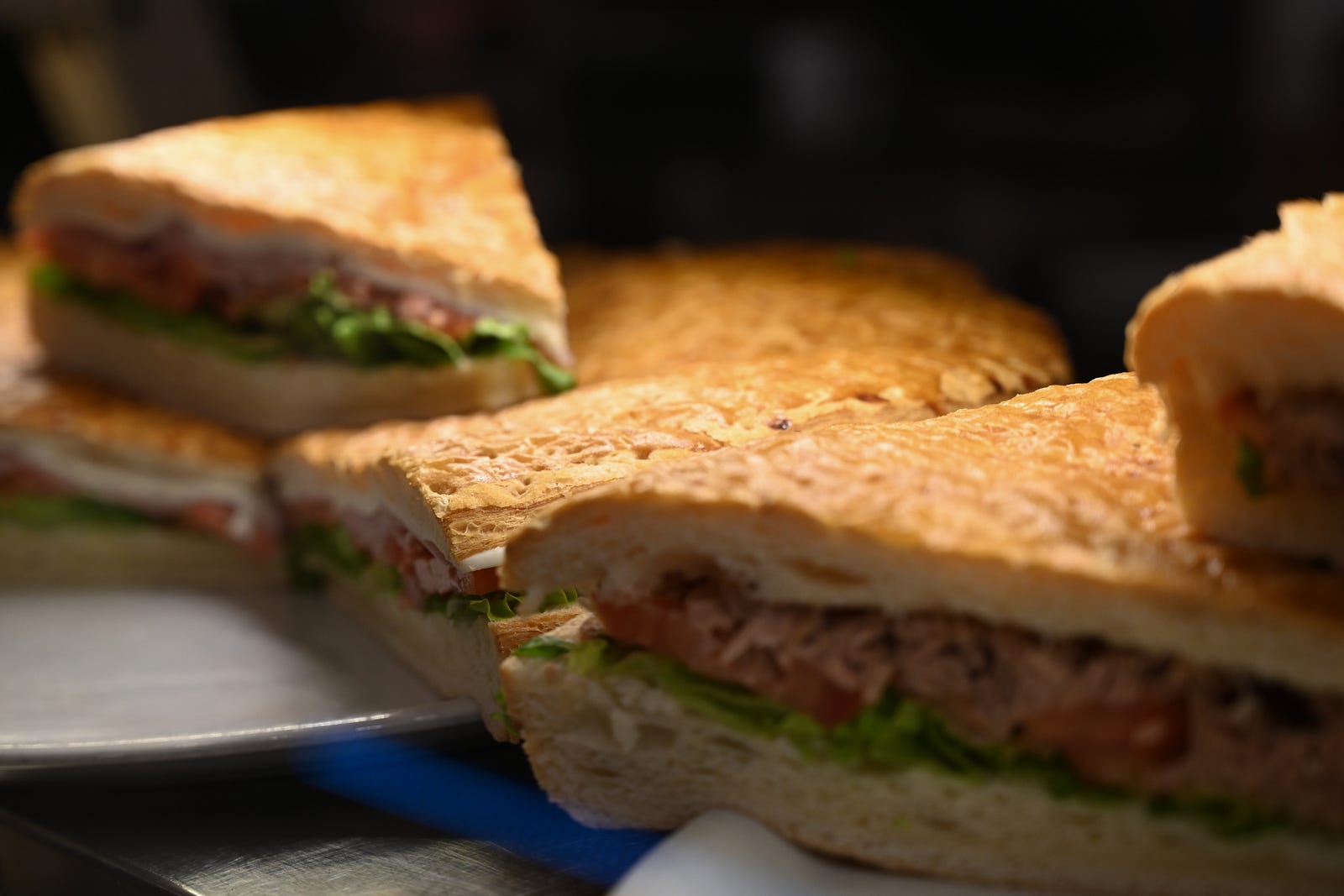
The next morning, violin concertos were being played in the many piazzas as we walked, and my two oldest daughters paused long enough to slow dance together, mimicking the other couples in the square.
I glanced at the cathedral behind them, and noted its name, Santa Margherita dei Cherchi. It was a small church nicknamed the Church of Dante after the brilliant poet, theorist and philosopher who lived and worked in Florence.
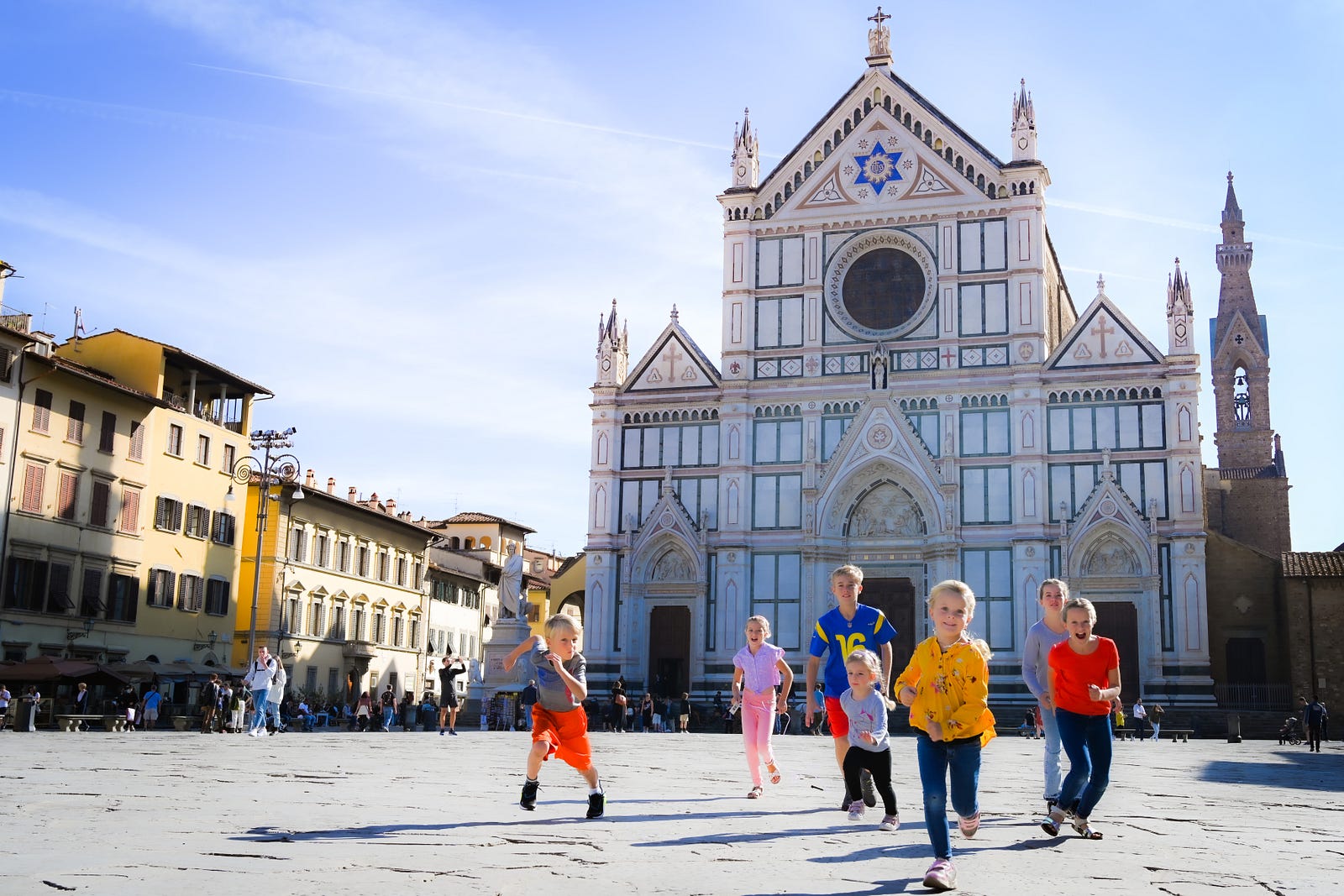
It was Dante who wrote the masterpiece, The Divine Comedy, one of the most impressive European literary achievements. It took the reader on a journey through hell, purgatory and paradise.
He’d written in modern Italian instead of the traditional Latin, making his writing accessible to the masses, a daring move which made an enormous impact in literature. Dante wrote in a time when Florentines felt assured that their city was equivalent with city-states like Rome and Athens, and his writing reflected their sentiments.

The night before, as I tucked the girls into bed, I’d read a line of Dante’s poetry to them that I loved from The Divine Comedy,
“Three things remain with us from paradise: stars, flowers, and children.”
Dante
They all found delight in that line, and I heard them repeating it over and over again as they fell asleep.

The next morning, we waltzed our way across the piazza toward the Arno River to the delightful sounds of Giuseppe Verdi being played on strings, and I imagined High Renaissance artists walking the same cobblestone streets while arguing over Dante’s philosophical poetry.

Smiling at the thought, I described some of the famous Florentine artists to my children: Michelangelo, Botticelli, da Vinci, and I recounted some of their respective adventures during their time working in Florence.
“But why did Da Vinci and Michelangelo hate each other so much?” Reagan asked thoughtfully as we walked along the riverbank. We were on our way to peruse the shops along the famous Ponte Vecchio bridge.
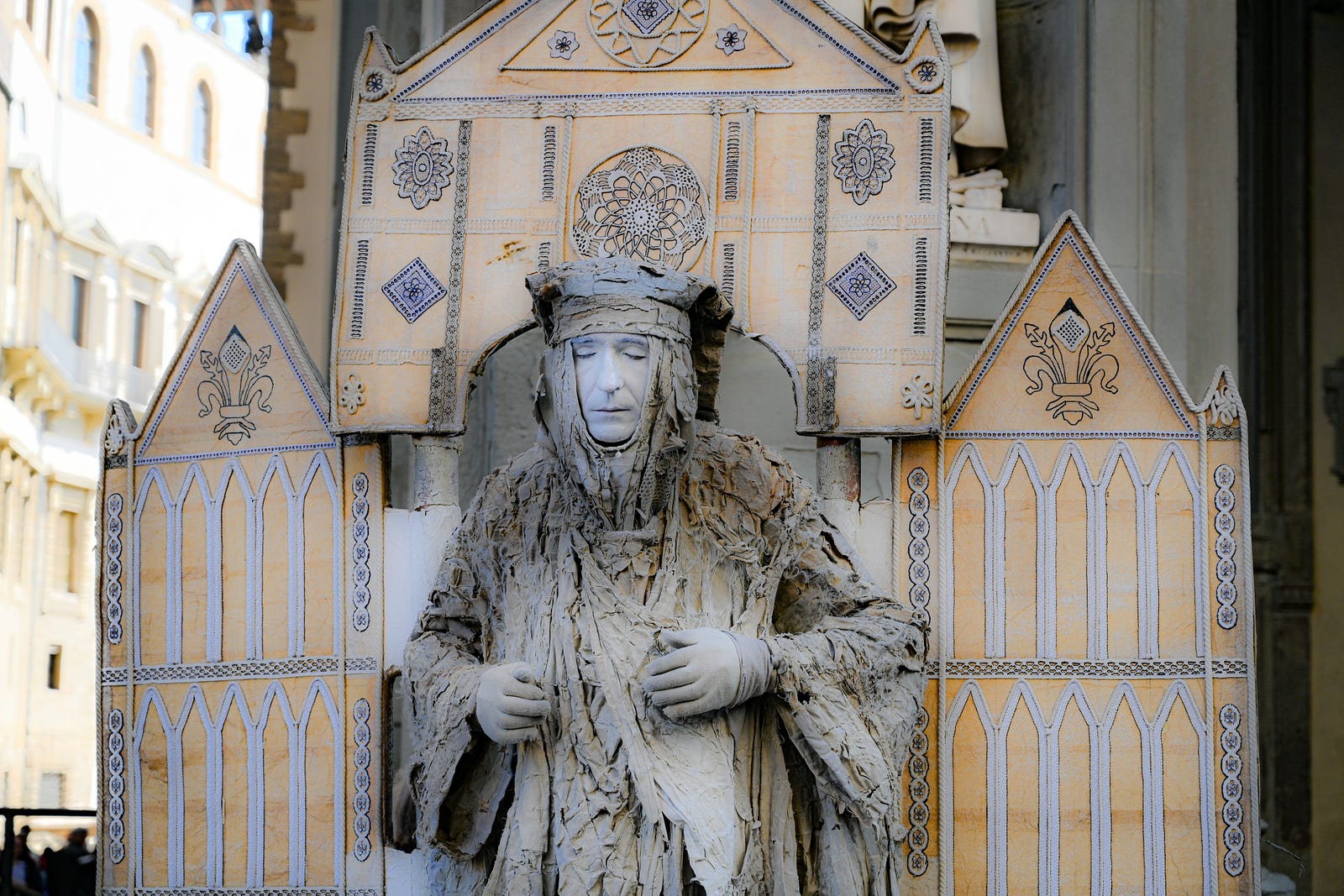
Explaining so young minds could understand, I shared that Michelangelo was a prodigy, a genius from a young age. Da Vinci was 13 years older than him and the two constantly sparred over who was the best artist.
Michelangelo was a medium-sized, scruffy fellow who rarely bathed or changed his clothes. He had very little patience with people, preferring to stay in his artistic bubble unbothered.
Da Vinci, on the other hand, was a wealthy man who wore elegant clothes and spoke many languages. He was often surrounded by people who adored him, and he presented himself more as a prince than a painter. The two men had both been awash in enlightened brilliance, but they despised each other greatly.

As we arrived at Ponte Vecchio, Jedd told the girls the story of how Lorenzo Medici had noticed Michelangelo as a young teen and invited him to come study alongside his own sons in the Palazzo Medici, where Michelangelo could be surrounded by the elite of Florence. There he was trained further as an up and coming artist.
Madison suddenly lit up as we walked down the famous bridge. Ponte Vecchio was lined with small shops, and some fine jewellery pieces boasted shiny gemstones, teasing the eyes of my budding scientist who dreamed of becoming a geologist, archeologist, or paleontologist — anything to do with natural science, history and being a collector.
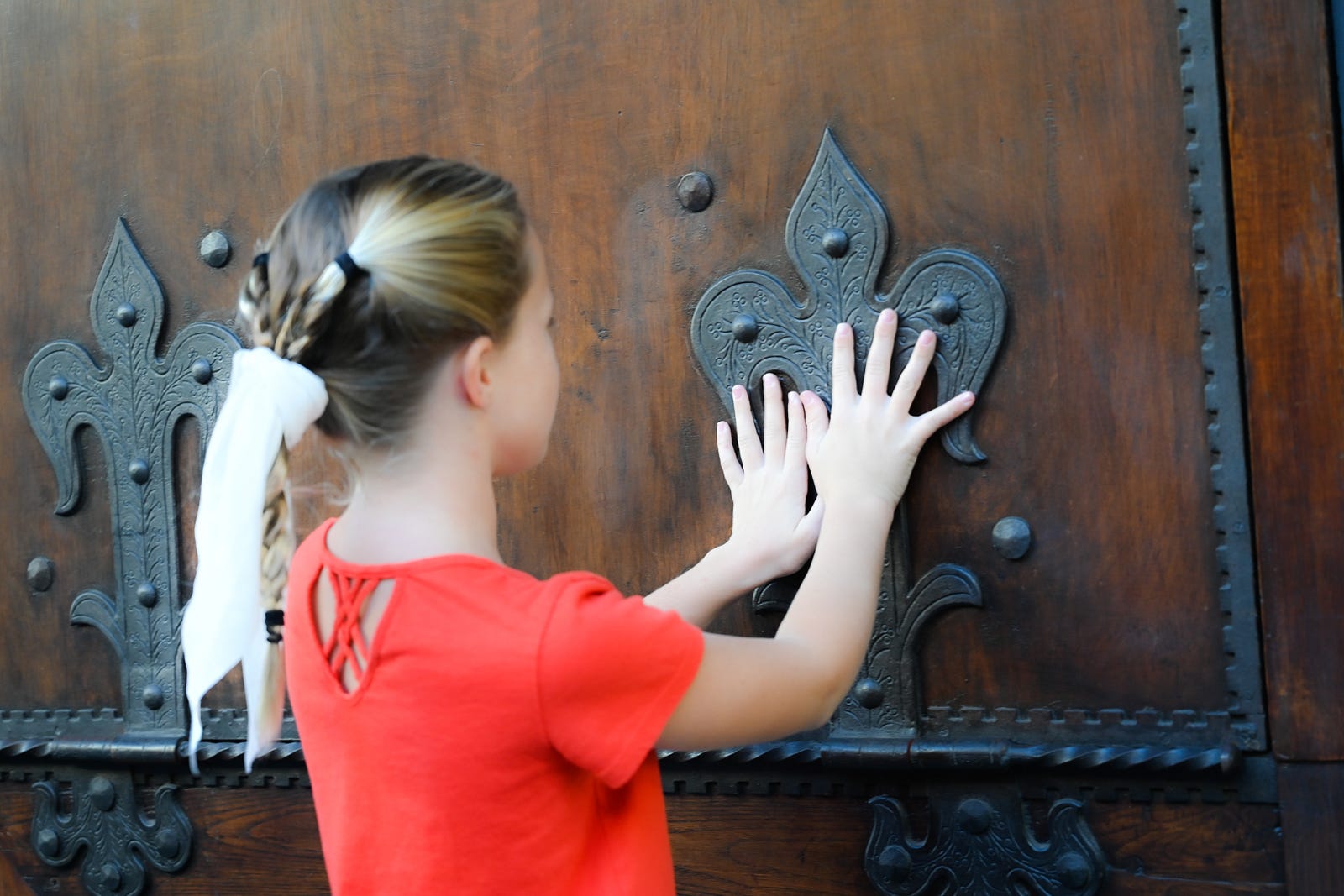
Day after day our family learned like this in Florence — walking, discovering, learning, and growing alongside each other as we explored Firenze.

Get my Italy guide book so you are fully equipped for your Italian experience!
Italy Guide Book for Families